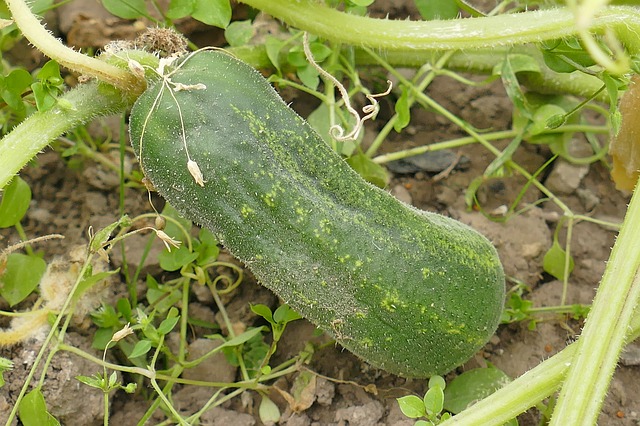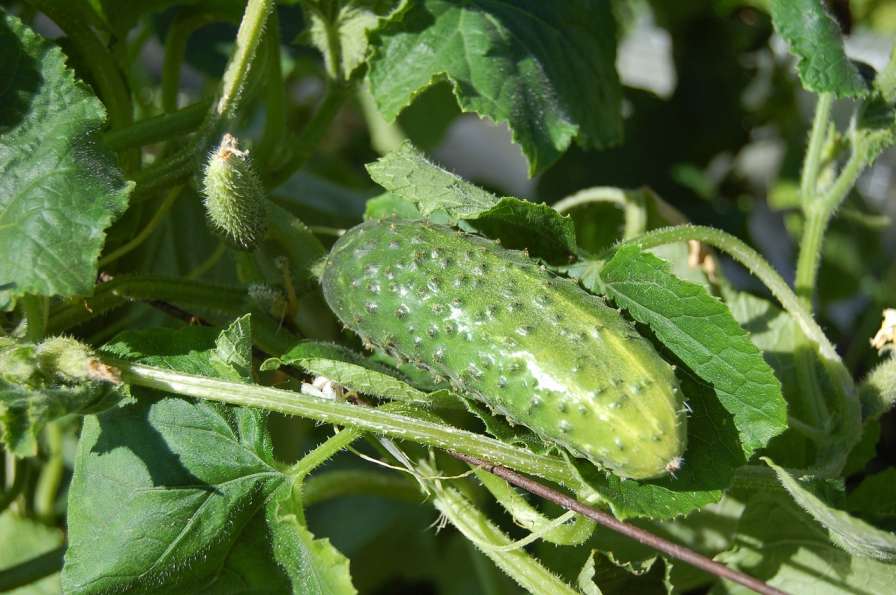Cucumbers are one of the most popular vegetables in the world. People love cucumber for their crisp texture and refreshing taste. If you’re growing cucumbers in your own garden, then understand how much sunlight they need in order to thrive well.
Sunlight is essential for photosynthesis, the process by which plants convert light into energy. Without enough sunlight, cucumbers may not grow properly, which can result in stunted growth, poor yields, and even plant death.
Cucumber plants need a great amount of sunlight to thrive. Cucumbers need at least 5 to 6 hours of direct sunlight daily. Regular and uninterrupted direct sunlight is required for cucumbers to grow and yield fully.
If cucumber plants don’t receive sufficient sunlight, they may grow slowly, produce fewer fruits, and can be exposed more to diseases and pests. However, if cucumber plants receive too much sunlight, they may become stressed and experience sunburn.
Importance of Sunlight for Cucumbers Growth

Sunlight is a vital component for the growth of cucumbers. Cucumbers are a type of plant that requires a lot of direct sunlight for photosynthesis, the process by which they convert sunlight into energy to fuel their growth. Without sufficient sunlight exposure, cucumbers may not grow properly, resulting in stunted growth and poor yields.
One of the essential functions of sunlight for cucumbers is that it helps them produce chlorophyll. On the other hand, if cucumber plants receive too much sunlight, it can lead to problems such as sunburn and stress. Sunburn can cause the leaves and fruits of cucumber plants to turn yellow or brown and become dry and brittle.
This can make them more exposed to pests and diseases. Stress from excessive direct sunlight exposure can also cause cucumber plants to become weak and vulnerable to pests and diseases.
Also Read: Why You Should Not Plant Cucumbers Near Tomatoes?
Ideal sunlight conditions for cucumber plants
- Cucumber plants need at least 5-6 hours of direct sunlight per day to grow well.
- Morning sunlight is preferred as it allows the plants to soak up the light they need before the heat of the day sets in.
- Afternoon sunlight can be too intense for cucumber plants, especially in hot climates. So, provide some shade during the hottest part of the day if necessary.
- Cucumber plants should be planted in an area that receives full sun for most of the day.
- Check the amount of direct sunlight that your cucumber plants are receiving and change the direction of your plant if required.
- You can use shade to provide safety from excessive heat and light during the hottest parts of the day to your plant.
- Provide sufficient water and nutrients to your cucumber plant to grow and thrive in ideal sunlight conditions.
- In cooler climates, it’s vital to ensure that cucumber plants receive enough sunlight to grow properly, and planting them in a location that receives the most sunlight is recommended.
- Cucumber plants grown in containers or indoors can require sufficient artificial light to balance the lack of natural sunlight. A grow light or other types of artificial lighting can be used to provide sufficient light for indoor or container-grown cucumber plants.
Location for growing cucumbers
Choosing the right location for growing cucumbers is necessary for a successful harvest. Here are some important factors to consider when selecting a location for your cucumber plants.
Sunlight – As mentioned earlier, cucumbers require at least 5-6 hours of direct sunlight per day. Therefore, it’s vital to choose a location that receives full sun for most of the day. The location should receive morning sunlight and have some protection from extreme afternoon sunlight.
Soil – Cucumbers grow best in well-draining, nutrient-rich soil. The soil should be loose, with good water retention capabilities. The ideal pH range for growing cucumbers is between 5.5 and 7.0.
Temperature – Cucumbers prefer warm temperatures between 70-85°F (21-29°C). Cooler temperatures can slow down their growth, while too-hot temperatures can stress the plants.
Watering cucumber – Cucumber plants require consistent moisture to grow and produce fruit.
Space – Cucumber plants require a lot of space to grow and produce fruit. They also require support, such as a trellis or fence, to prevent them from spreading all over the ground.
Pest and disease – It’s vital to choose a location that’s relatively pest and disease-free. Avoid areas with a history of fungal or bacterial diseases or infestations.
Common Mistakes to Avoid
Growing cucumbers can be a rewarding experience, but it’s vital to avoid common mistakes that can lead to poor growth and reduced yields.
Planting too early – Cucumber plants are sensitive to cold temperatures, so planting them too early can lead to stunted growth and poor yields. Wait until the soil has warmed up to at least 60°F (16°C) before planting cucumber seeds or transplanting them.
Overcrowding – Cucumber plants require a lot of space to grow and produce fruit. Overcrowding them can lead to poor air circulation, increased humidity, and increased risk of pest and disease problems. Plant cucumber seeds or transplants at least 12-18 inches (30-45 cm) apart in rows that are 3-4 feet (0.9-1.2 m) apart.
Overwatering or underwatering – Cucumber plants require consistent moisture to grow and produce fruit, but overwatering or underwatering can lead to poor growth and reduced yields. Water cucumber plants deeply once a week, or more frequently during hot, dry weather. Avoid overhead watering, as it can increase the risk of fungal diseases.
Poor soil – Cucumber plants require well-draining, nutrient-rich soil to grow and produce fruit. Before planting, amend the soil with compost or well-rotted manure to improve soil structure and fertility. Test the soil pH and adjust it and ensure that it’s in the ideal range of 6.0-7.0.
Also Read: Is Chicken Manure Good for Cucumbers?
Lack of support – Cucumber plants require support, such as a trellis or fence, to prevent them from sprawling on the ground. Without support, the plants can become tangled and more prone to pest and disease problems.
Failure to control pests and diseases – Cucumber plants are susceptible to a variety of pests and diseases, such as cucumber beetles, aphids, and powdery mildew. Watch your plant regularly for signs of damage or disease, and take proper actions to control them.
Also Read: How Deep Should a Raised Bed Be for Cucumbers?
Conclusion
Sunlight is an important factor in the growth and development of cucumber plants. By providing cucumber plants with sufficient sunlight, you can help ensure that they grow well, produce high yields, and fight pests and diseases.
However, it’s vital to choose a suitable location for growing cucumbers, prepare the soil properly, and avoid common mistakes such as overcrowding and overwatering.
With proper care and attention, you can grow healthy and productive cucumber plants that will provide you with fresh and delicious cucumbers throughout the growing season. Remember to monitor the plants regularly for signs of stress or disease, and take appropriate actions to address any issues that occur.

